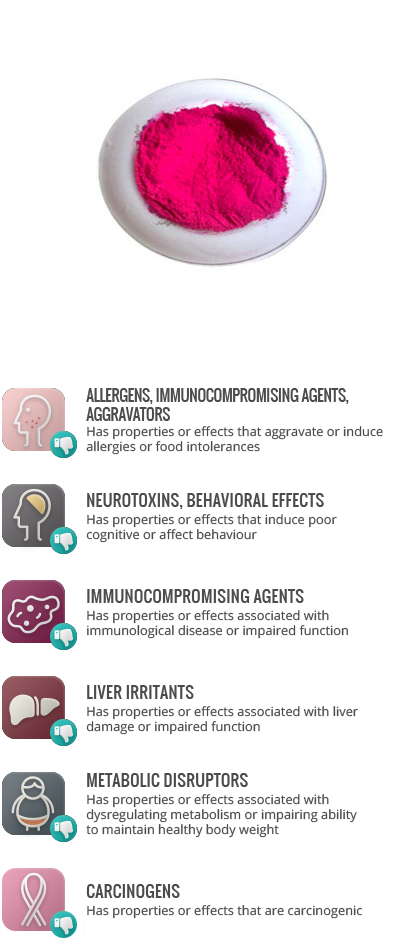Definition
Erythrosine is a cherry-pink synthetic dye used in food colouring. It is the second least common dye used in the US, but is used heavily in Europe where the alternative red, Allura Red AC, is banned.
Health considerations
Erythrosine approval is based on animal studies which have shown no negative effects with long-term use. However, erythrosine is associated with negative reactions in asthmatic patients. It may interfere with chemicals in the brain to lead to hyperactivity in children and may interact with white blood cells. Furthermore, studies in which high doses were given to animals have shown it to interfere with liver function, affect response to pain, and lead to changes in body weight.
Keep in mind
The FDA has a partial ban on erythrosine due to high doses being associated with cancer in rats; there have been calls for complete bans.
May be found in
Candied fruit, processed meat, chewing gum, red coloured pistachios, cake-decorating gels
References
Journal of Allergy and Clinical Immunology
Science New Series
Food and Chemical Toxicology
TFL
The New York Times
Center for Science in the Public Interest
Journal of Orthomolecular Medicine
Food and Chemical Toxicology
Alternative Spellings and Names
FD&C Red No. 3, disodium salt of 2,4,5,7-tetraiodofluorescin, E127


